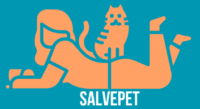Understanding feline communication is essential for any cat owner who wants to strengthen their bond with their pet. Cats have a unique way of expressing themselves, using a combination of vocalizations and body language.
Each sound and movement can convey different emotions and needs. Therefore, learning to decipher these messages is vital to ensuring your furry friend’s well-being and avoiding misunderstandings that can lead to undesirable behaviors.
Feline Communication: What Cats Are Trying to Say
Cats use a rich blend of vocalizations, body language, and behavior to express their emotions and needs. Understanding feline communication helps strengthen the bond between humans and their feline companions.
By decoding their signals, you can better meet your cat’s needs and foster a happier, more harmonious relationship.
Vocalization
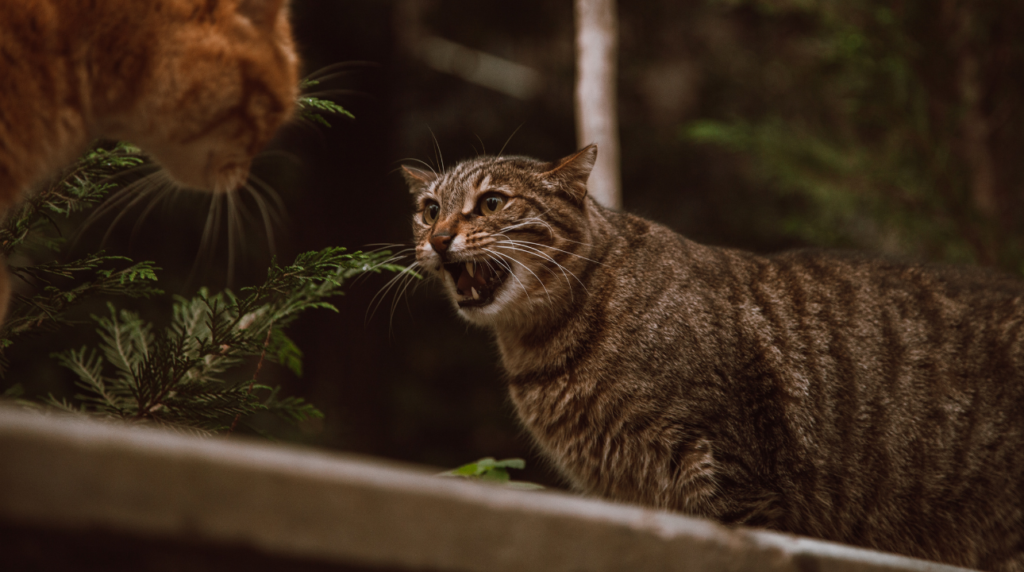
Meowing
Meowing is the most common form of vocalization among cats and can vary significantly in tone, duration, and intensity. A short, high-pitched meow often indicates that the cat is seeking attention, food, or play.
On the other hand, a prolonged and low meow may signal irritation or discomfort. Cats can also use meowing to communicate with other cats, although this type of vocalization is more frequently directed toward humans.
The frequency and style of meows can change depending on the situation; for example, a happy cat may meow in a softer and more melodious way, while a cat feeling threatened might emit louder and more assertive meows.
Purring
Purring is a well-known vocalization typically associated with relaxation and satisfaction. When a cat purrs, it usually indicates that it feels comfortable in its environment, such as when it is being petted or relaxing next to you.
However, purring can also have a more complex meaning. Cats in pain, stress, or discomfort may also purr, as this vocalization can act as a form of self-soothing.
This behavior suggests that while purring is generally a positive sign, it is essential to observe the context in which it occurs to accurately interpret their emotions.
Growls and Hisses
Growls and hisses are vocalizations that indicate the cat is feeling threatened, uncomfortable, or irritated. A growl may serve as a warning for an intruder, whether human or animal, to keep their distance. A hiss, on the other hand, is a more aggressive vocalization and generally signals that the cat is ready to defend itself.
These sounds are particularly important to recognize in interactions with other animals or during visits to new environments where the cat may feel insecure. Respecting these signals is crucial to avoid conflicts and ensure your cat’s safety.
Hissing
Hissing is a vocalization that expresses a high level of stress or aggression. A cat that hisses is typically warning that it feels threatened and may attack if the situation does not change.
This vocalization is often accompanied by a defensive posture, such as arching its back and puffing up its fur. Hissing is a clear sign that the cat is out of its comfort zone and should be treated with caution. Understanding when and why a cat hisses can help owners better manage interactions and avoid unnecessary confrontations.
Other Sounds
In addition to the main vocalizations mentioned, cats can produce a variety of other sounds, such as yowls, whines, or even “chattering,” which occurs when a cat observes birds or prey. These sounds can have varied meanings, from expressing frustration to attempting to mimic the sounds of their prey.
Each cat is unique, and their vocalizations can be influenced by factors such as age, personality, and environment. Therefore, paying attention to your cat’s vocal repertoire can offer deeper insights into their emotions and needs.
Feline Communication: Body Language
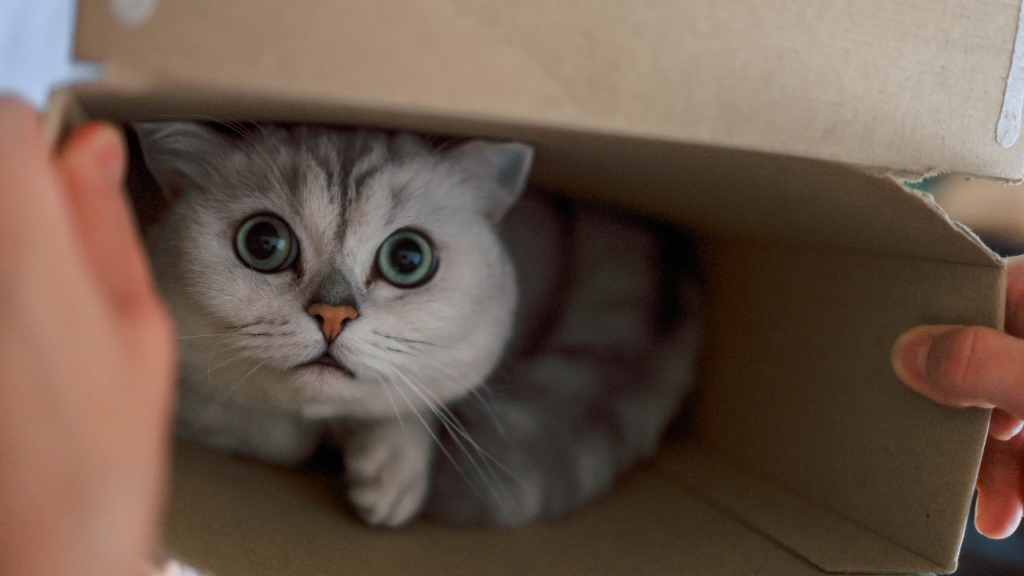
Body language is a crucial part of feline communication, offering valuable clues about a cat’s emotional state and intentions.
The posture and movement of a cat can convey a variety of messages, allowing owners and other cats to quickly interpret how they feel.
Body Posture
How a cat physically presents itself can say a lot about its disposition. A relaxed cat, with a loose body and raised head, demonstrates comfort and confidence. In contrast, a cat that arches its back and flattens its fur is preparing to defend itself or feels threatened.
The position of the paws is also significant; a cat sitting with its front paws folded is generally calm, while a cat that pulls away or retreats may be preparing to escape.
Tail Movements
The tail is one of the primary indicators of a cat’s emotional state and can reveal a range of feelings. An upright tail is a clear sign of confidence and happiness, indicating that the cat feels safe and comfortable.
When a cat slowly sways its tail, it may be approaching a situation cautiously, while a quick and agitated movement can signal excitement or frustration.
Conversely, a low tail or one tucked between the legs indicates fear or submission. Additionally, if the tail is puffed up or resembles a “broom,” it signals that the cat feels threatened or is prepared to confront danger.
Ear Movements
A cat’s ears act as indicators of its emotional state. Ears pointing forward show curiosity and interest, while ears that are turned back or flattened against the head indicate fear or aggression.
A cat moving its ears from side to side is likely assessing its environment, signaling that something has caught its attention or that it is feeling insecure.
Facial Expressions
The eyes and mouth also play a fundamental role in feline communication. Cats that maintain a soft and relaxed gaze are expressing confidence and contentment. A fixed and penetrating stare, however, can be a sign of challenge.
When cats slightly open their mouths, they may be showing that they are relaxed, but a cat baring its teeth may be preparing to attack. Additionally, pupil dilation can indicate excitement, fear, or aggression, depending on the context.
Understanding these body language expressions helps owners decipher their cats’ emotional states, allowing for more harmonious and respectful interactions. By carefully observing your cat’s body language, you can better respond to its needs, strengthening the bond between you and providing a safe, welcoming environment.
Feline Communication: Eye Contact
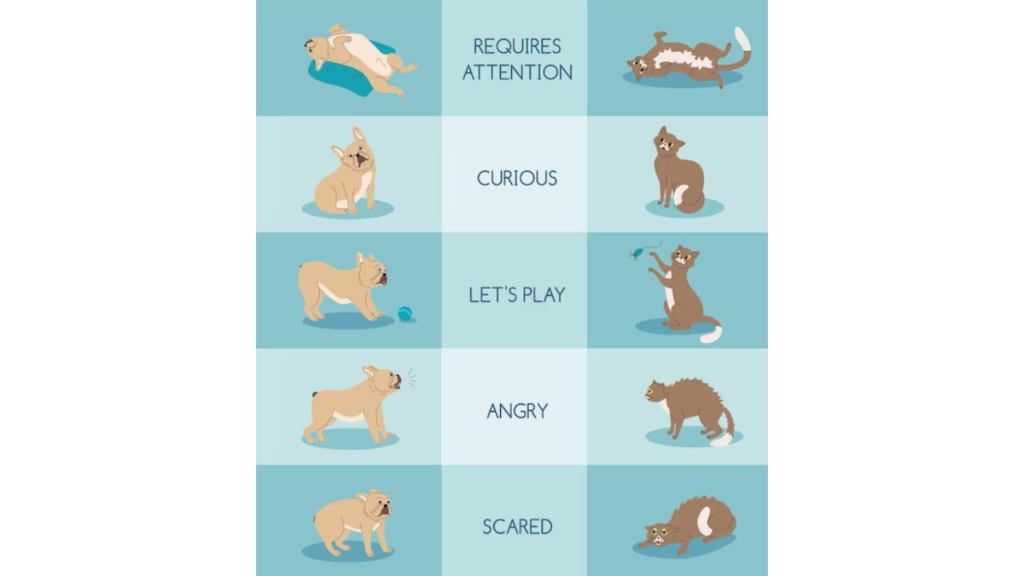
Eye contact is a powerful form of communication between cats and humans, playing a crucial role in building bonds and expressing emotions.
How a cat uses its eyes can reveal a lot about how it feels about its environment and the people around it.
Prolonged Stare
Cats that maintain prolonged eye contact may be demonstrating interest or affection, especially if their body is relaxed and their ears are pointed forward. This type of gaze often signals that the cat feels safe and comfortable in your presence.
However, an intense, unblinking stare can be interpreted as a challenge, indicating that the cat feels threatened or is prepared to defend itself. It is important for owners to recognize the context in which the gaze occurs to understand the message behind it.
Slow Blinking
One of the most affectionate forms of visual communication between cats is slow blinking. This gesture, which involves closing the eyes slowly and then opening them, is a sign of trust and love.
When a cat does this toward a human, it is showing that it feels safe and is willing to get closer. To reciprocate this gesture and strengthen the bond, owners can try slowly blinking back, creating a special moment of connection between them.
Looking Away
On the other hand, looking away may indicate that a cat is feeling uncomfortable or threatened. Cats that avoid direct eye contact might be trying to prevent confrontations or may not feel at ease in certain situations.
This is especially true in interactions with other cats or animals. In such cases, respecting the cat’s space and allowing it to approach at its own pace is crucial for ensuring its comfort and safety.
In summary, eye contact between cats and humans is a fundamental aspect of feline communication, reflecting emotions, intentions, and levels of comfort.
Paying attention to how your cat uses its gaze can help deepen your understanding of its emotional needs, promoting a healthier and more harmonious relationship.
By accurately interpreting these nuances of eye contact, owners can further strengthen their bond with their felines, creating an environment of trust and love.
Most Expressive Cat Breeds for Communication
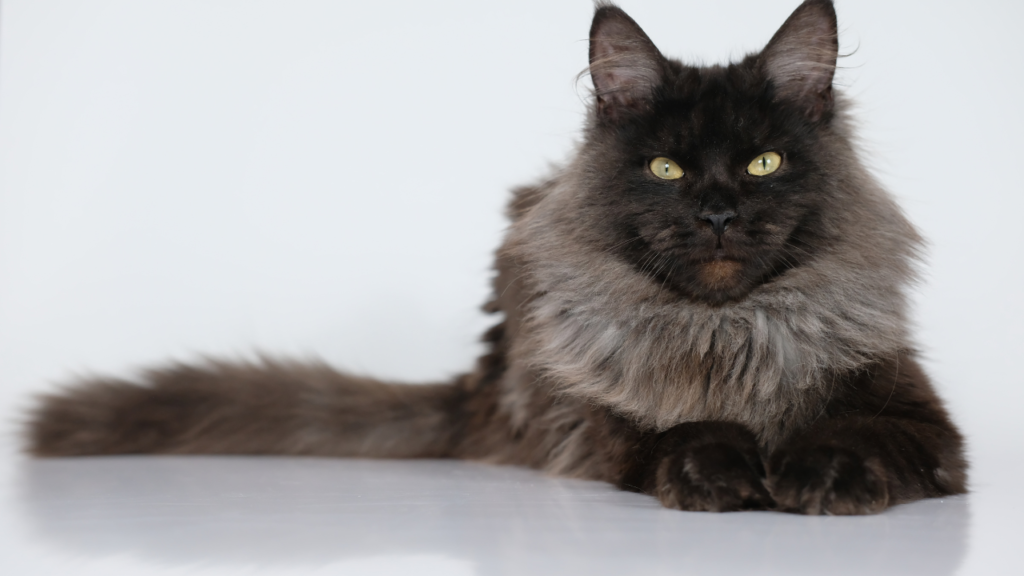
Some cat breeds are known for their more extroverted and expressive personalities, making them excellent communicators. These breeds tend to be more sociable and are inclined to engage in interactions with humans, using vocalizations, body language, and unique behaviors to convey their feelings.
Below are some of the most expressive cat breeds that enhance the communication between cats and their human companions:
Siamese
Siamese cats are famous for their intense vocalization and sociable personality. They often “talk” to their owners, using a variety of loud, melodious meows to express their needs and desires.
Additionally, Siamese cats are very affectionate and enjoy being close to their humans, constantly seeking attention and affection. Their expressive nature makes them one of the most communicative breeds, significantly contributing to the communication between cats and their owners.
Ragdoll
Ragdolls are known for their calm and gentle demeanor, but they are also extremely affectionate and enjoy interacting with their owners. While they are not as vocal as Siamese cats, they communicate their love and comfort through soft purring and approaching behaviors, such as flopping into their owners’ arms.
Ragdolls often follow their humans around the house, showing their desire to be near and their willingness to interact, thereby enhancing the communication between cats and their families.
Burmese
Burmese cats are very sociable and affectionate, with a strong desire for communication between cats and their humans. They are known for their short, soft meows, which they use to grab attention and engage in conversations.
This breed is highly interactive and loves to participate in family activities, making them ideal companions for those seeking an expressive and communicative cat.
Maine Coon
Maine Coons are one of the largest cat breeds and have a remarkable personality. They are known for being friendly and playful, as well as for communicating with a variety of vocalizations.
Their meow is often described as similar to that of a small cat and is used to express happiness, curiosity, and even to initiate play. Furthermore, they are very adaptable and usually get along well with children and other pets, making them great for families and promoting the communication between cats and their human companions.
Scottish Fold
Scottish Fold cats are recognized for their folded ears and adorable facial expressions. They are very affectionate and love interacting with their humans, often using a combination of soft vocalizations and body language to communicate.
The Scottish Fold is a curious cat that enjoys exploring its environment and participating in family activities, always looking for an opportunity to engage, which fosters better communication between cats and their families.
Conclusion
Understanding feline communication is essential for strengthening the bond between humans and cats. By observing vocalizations, body language, tail movements, and eye contact, owners can decipher their felines’ feelings and needs, creating a safe and welcoming environment.
Each cat is a unique individual with its own ways of expressing itself, and it is crucial for owners to pay attention to these signals to promote harmonious living.
Additionally, knowing the most expressive cat breeds can help prospective owners choose a companion that aligns with their lifestyle and preferences. Breeds like the Siamese and Ragdoll, with their sociable and communicative personalities, are ideal for those seeking constant and affectionate interaction.
On the other hand, breeds like the Maine Coon, with their playful nature, offer joy and entertainment, making the experience of having a cat even more rewarding while enhancing the communication between cats and their owners.
Ultimately, effective communication between cats and humans not only enriches the relationship but also promotes the emotional well-being of both. Learning to interpret cat language is an investment that results in deeper bonds and a happier coexistence.
Frequently Asked Questions
- How do cats communicate with each other?
Cats communicate through vocalizations, body language, tail movements, and eye contact. They use these forms of communication to express emotions, establish territory, and interact socially, enhancing the overall communication between cats.
- What does it mean when my cat meows a lot?
A cat that meows excessively may be trying to get attention, express hunger, discomfort, or stress. Each meow can have a different meaning, so it’s important to observe the context and the cat’s behavior to improve the communication between cats and their owners.
- What is the importance of cat body language?
Body language is crucial for understanding how a cat feels. Movements such as tail position, ear orientation, and body posture provide important signals about their emotional state, helping owners respond appropriately and facilitating better communication between cats.
- Do cats really blink to communicate?
Yes! Slow blinking is a form of communication that cats use to show trust and affection. When a cat slowly blinks at a human, it usually indicates that it feels safe and comfortable, which is essential for healthy communication between cats.
- Which cat breeds are the most expressive?
Some of the most expressive cat breeds include the Siamese, Ragdoll, Burmese, Maine Coon, and Scottish Fold. These breeds are known for their sociable and vocal personalities, facilitating communication with their owners and promoting better communication between cats.
- What does a cat’s tail indicate about its mood?
The position and movement of a cat’s tail are important indicators of its mood. An upright tail suggests happiness and confidence, while a low tail or one tucked between the legs may signal fear or submission, which can impact the communication between cats.
- How can I tell if my cat feels threatened?
A cat that feels threatened may show signs such as ears pulled back, a puffed-up tail, arching its back, and avoiding eye contact. If you notice these signs, it is important to give the cat space and avoid situations that could escalate the threat, as this affects the communication between cats.
- Why do cats rub against people?
When a cat rubs against people, it is marking its territory and showing affection. This action also releases pheromones that promote social bonding between the cat and its human, enhancing the overall communication between cats.
- Do cats communicate through scents?
Yes, cats use their sense of smell as a form of communication. They have scent glands in various parts of their bodies, and by rubbing against objects or people, they leave their scent mark, indicating territory and identity, which is vital for the communication between cats.
- How can I improve communication with my cat?
To improve communication with your cat, closely observe its behavior and respond to its vocalizations and body language. Take time to interact, play, and build a bond through affection and attention to foster better communication between cats.
- My cat is being aggressive; how can I interpret this?
Aggression in cats can be caused by fear, territoriality, or frustration. Observe the body language, such as ears pulled back, puffed-up tail, and tense posture. Give the cat space and avoid provoking it until it calms down, which will improve communication between cats.
- Do cats have a unique “vocabulary” with their owners?
Yes, many cats develop a unique “vocabulary” of vocalizations and behaviors with their owners. Each cat may use different types of meows or expressions to communicate specifically with people it knows, which enhances the communication between cats.
- How does eye contact affect feline communication?
Eye contact is an essential part of feline communication. Prolonged gazes can indicate trust, while looking away may signal discomfort or submission. It’s important to consider the context and the cat’s body language to improve communication between cats.
- Why does my cat follow me around?
When a cat follows you around, it may be demonstrating curiosity, interest, or a desire for interaction. Cats that feel secure and confident in an environment often approach their owners, which enhances communication between cats.
- What should I do if my cat doesn’t communicate much?
Some cats are naturally more reserved. To encourage them to communicate, create a safe and welcoming environment, interact with them regularly, and provide play that stimulates vocalization and interaction, improving communication between cats.
- Does a cat’s vocalization change with age?
Yes, a cat’s vocalization can change with age. Older cats may become less vocal or alter the frequency and type of vocalizations as their needs and health conditions change, impacting communication between cats.
- Can cats that meow a lot be sick?
Excessive vocalizations can be a sign that a cat is feeling unwell or stressed. If a cat that usually does not meow much starts meowing excessively, it is important to consult a veterinarian to rule out health issues, as this affects the communication between cats.
- How do cats express happiness?
Cats express happiness through soft vocalizations, purring, an upright tail, and approaching behaviors, such as rubbing against or lying close to their humans. This enhances the overall communication between cats.
- My cat hides when scared; is this normal?
Yes, it is normal for cats to hide when they are frightened or stressed. This is an instinctive response that helps them feel safe. Give your cat space and time to recover, as this can impact their communication between cats.
